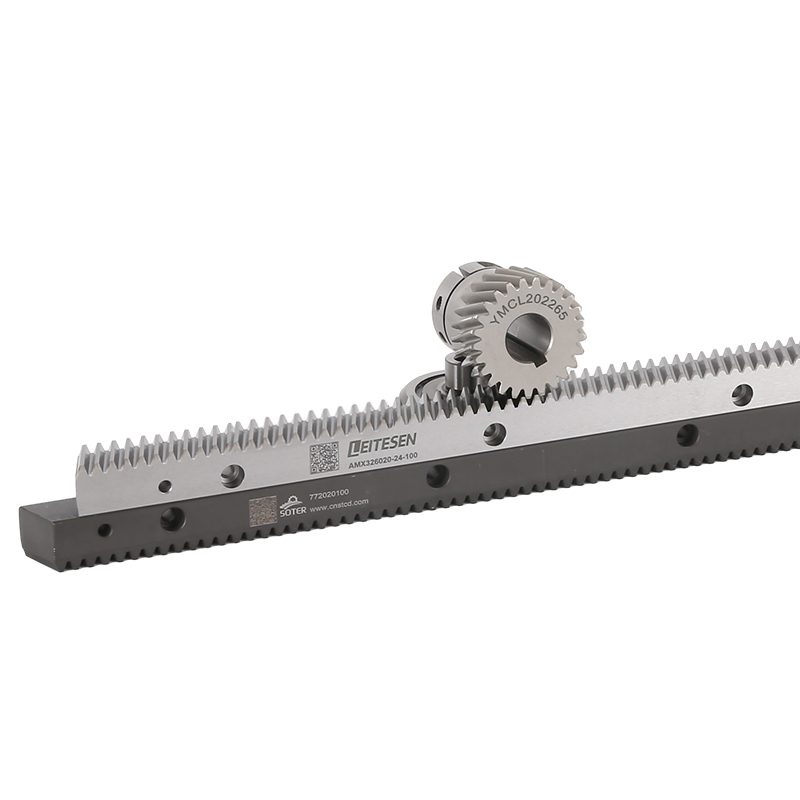Sep 19, 2025
In industrial machinery, the durability of motion transmission components depends heavily on their ability to resist wear over long periods of use. Continuous engagement of gear teeth under load generates friction, which inevitably causes material loss if not managed correctly. For components such as the Precision Gear Rack, which operate in environments where both precision and durability are essential, wear resistance directly impacts service life, accuracy, and overall reliability. Enhancing this characteristic through surface hardening processes has become a widely adopted solution to meet modern engineering demands.

How Surface Hardening Works
Surface hardening is a metallurgical treatment designed to increase the hardness of the outer layer of a component while preserving a tougher, ductile core. This dual-property structure ensures that the hardened surface resists wear, indentation, and scuffing, while the interior maintains resilience against impact and shock loading. Common methods include induction hardening, carburizing, nitriding, and laser hardening. Each technique alters the microstructure of the material to create a hardened layer that can sustain repeated sliding and rolling contact, effectively prolonging the functional lifespan of the gear rack.
Impact on Wear Resistance
The improvement in wear resistance after surface hardening is substantial. A gear rack without such treatment may begin to show visible wear after a moderate number of operational cycles, especially under high load and speed conditions. By contrast, a surface-hardened rack demonstrates a significantly slower wear rate. Laboratory studies have shown that hardened surfaces can reduce material loss by as much as 50–70% compared to untreated racks. This enhancement ensures that dimensional accuracy is preserved longer, which is critical for precision applications where even minor tooth deformation can cause positioning errors.
Benefits in High-Stress Applications
In heavy-duty or high-precision environments, wear resistance directly translates to consistent performance. Machine tools, automated assembly systems, and robotic equipment all rely on accurate motion transfer. When wear occurs, backlash increases, accuracy deteriorates, and maintenance costs rise. Surface hardening prevents premature deterioration by creating a protective barrier against abrasive forces, micro-pitting, and adhesive wear. As a result, hardened racks maintain smoother operation, reducing vibration and noise, while also lowering the frequency of component replacement. This directly supports cost-efficiency and operational stability in demanding industries.
Comparison of Hardening Methods
Different surface hardening processes provide varying levels of wear resistance improvement. Induction hardening creates a deep hardened layer suitable for heavy load conditions, while nitriding produces a thin but very hard surface layer with good fatigue resistance. Carburizing offers a balance of depth and hardness, making it widely applicable to racks subjected to both high loads and moderate speeds. The choice of method depends on the intended operating environment and the specific wear mechanisms expected. Regardless of the process, all methods provide significant improvements compared to untreated steel, ensuring that the gear rack remains functional far longer under identical working conditions.
Longevity and Economic Advantages
The economic benefits of surface hardening cannot be overlooked. A gear rack with improved wear resistance reduces downtime, lowers replacement frequency, and reduces the risk of unexpected machine failures. While the upfront cost of surface treatment adds to the initial investment, the long-term savings in maintenance and enhanced productivity more than compensate for this expense. In industries where precision and uptime are critical, the financial advantages are particularly compelling.
Conclusion
Surface hardening treatments dramatically improve the wear resistance of gear racks by enhancing their ability to withstand frictional forces and surface fatigue. Through the creation of a hardened exterior combined with a tough core, these components deliver durability without sacrificing resilience. The result is longer-lasting precision, reduced maintenance, and good performance in high-demand applications. For modern mechanical systems requiring both accuracy and endurance, surface-hardened racks represent a highly effective solution that ensures consistent reliability over extended service life.